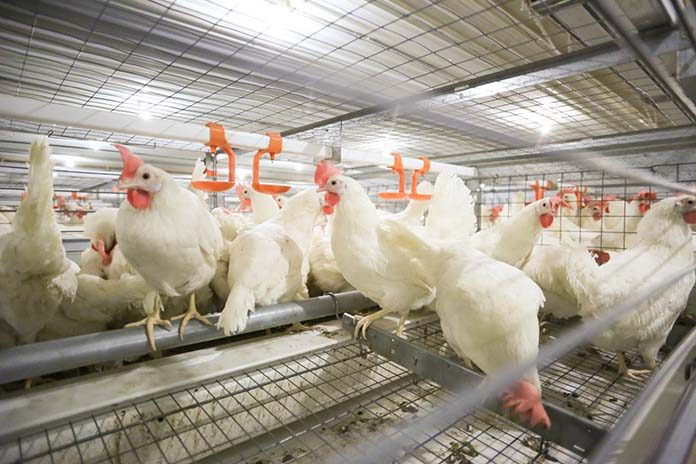
Feather pecking is a behavior in which individual laying hens peck repetitively at the plumage of conspecifics, causing poor feather. Although FP can be caused by many factors, the development of its most severe form appears to be enhanced by difficulty coping with social and non-social stress.
Laying hens are often subjected to stress, including adverse social life events such as constant mixing and limited access environmental enrichment when birds are housed in large flocks. These events predispose animals to perform anti-social behaviors. The aim of the present study was to investigate how Unpredictable, Repeated Stressors during adolescence affect birds’ interest in and reactions toward conspecifics.
We hypothesized that birds subjected to URS would express more anti-social behaviors toward each other, resulting in poorer feather cover and more head and neck injuries. White Leghorn laying hens (n = 86) were individually tagged and systematically assigned to 6 stressed (S) and 6 non-stressed (NS) groups (7 birds per group, 19 weeks of age).
Each group was housed in an enriched floor pen under commercial management conditions. Pens were video recorded for 4 weeks as a baseline to identify aggressive behavioral patterns of individual birds. The 6 S groups were exposed to social, i.e., mixing with unfamiliar birds, manual restrain for 5 min, holding in a transport crate in a crouched position for 1 h) and non-social, i.e., introduction to a novel environment, removal of nest boxes or perches URS while the NS groups were left undisturbed.
Behaviors were recorded after exposure to these URS for both the S and NS groups. All behavioral recordings were performed by the same blinded observer. Additionally, feather cover and injuries to the comb/head were scored on a binary scale and were collected both before and after URS for all birds. A generalized linear mixed model (Proc Glimmix) was used to analyze the data (SAS V9.4, SAS Institute, Cary NC). Variance of aggressive interactions, feather cover and injury scores were partitioned into the fixed effect stress using the most appropriate distribution. Baseline behavioral pattern and body weight were used as covariates.
Our results revealed aggressive interactions were significantly increased by the stress treatment (P=0.0091). S birds also had significantly poorer feather cover and more injuries (P= 0.0057 and P = 0.03, respectively).
These results show that a combination of social and non-social stressors during adolescence trigger aggressive interactions and negatively impact the feather cover of adult laying hens.

















